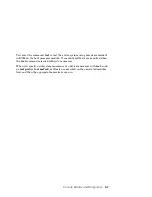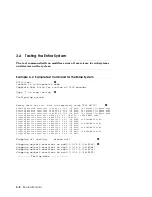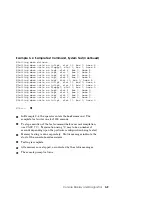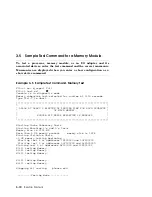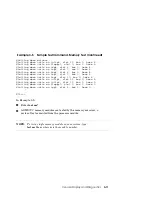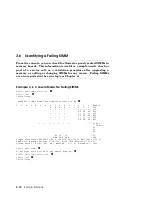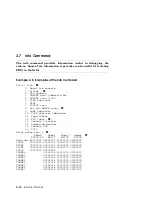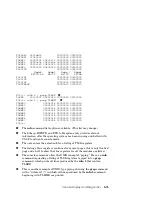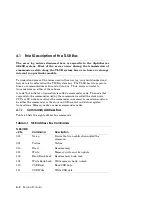
Console Display and Diagnostics
3-3
➊
The NODE # line lists the node numbers on the TLSB and I/O buses.
➋
The TYP line in the printout indicates the type of module at each TLSB
node. Processors are type P, memories are type M, and the KFTHA port
module is type A. A period (.) indicates that the slot is not populated or that
the module is not reporting.
➌
This line shows the results of individual processor and memory module tests.
Possible values are pass (+) or (–). Since the I/O port module does not have a
module-resident self-test, its entry for the ST1 line is always "o".
➍
The BPD line indicates boot processor determination. When the system goes
through self-test, the processor with the lowest ID number that passes self-
test (ST1 line is +) becomes the boot processor, unless you intervene. The
process occurs again after ST2 and ST3 testing. “B” indicates boot processor,
“E” indicates the processor is enabled to become the boot processor, and “D”
indicates that a console command has been issued disabling the processor
from the possibility of becoming the boot processor.
This BPD line is printed three times. After the first determination of the
boot processor, the processors go through two more rounds of testing. Since it
is possible for a processor to pass self-test (at line ST1) and fail ST2 or ST3
testing, the processors again determine the boot processor following each
round of tests. The first processor to pass self-test is chosen as the boot
processor.
➎
During the second round of testing (ST2) all processors run additional CPU
tests involving memory.
➐
During the third round of testing (ST3) all processors run multiprocessor
tests, and the status of each processor is once again reported on the BPD line.
➑
The primary CPU also tests the I/O port module at this time.
➒
In Example 3-1, the PCI (channel C0) and its options at nodes 0, 5, 6,
7, 8, 9, 10, and 11 passed self-test as indicated by the + symbols.
➓
I/O channels C1, C2, and C3 are not used.
➀
The ILV line contains a memory interleave value (ILV) for each memory.
➁
This line displays the size of each memory module and gives the total
size of system memory. In Example 3-1, the total size is 12 Gbytes.
➂
Console version and firmware revision date are given.



















